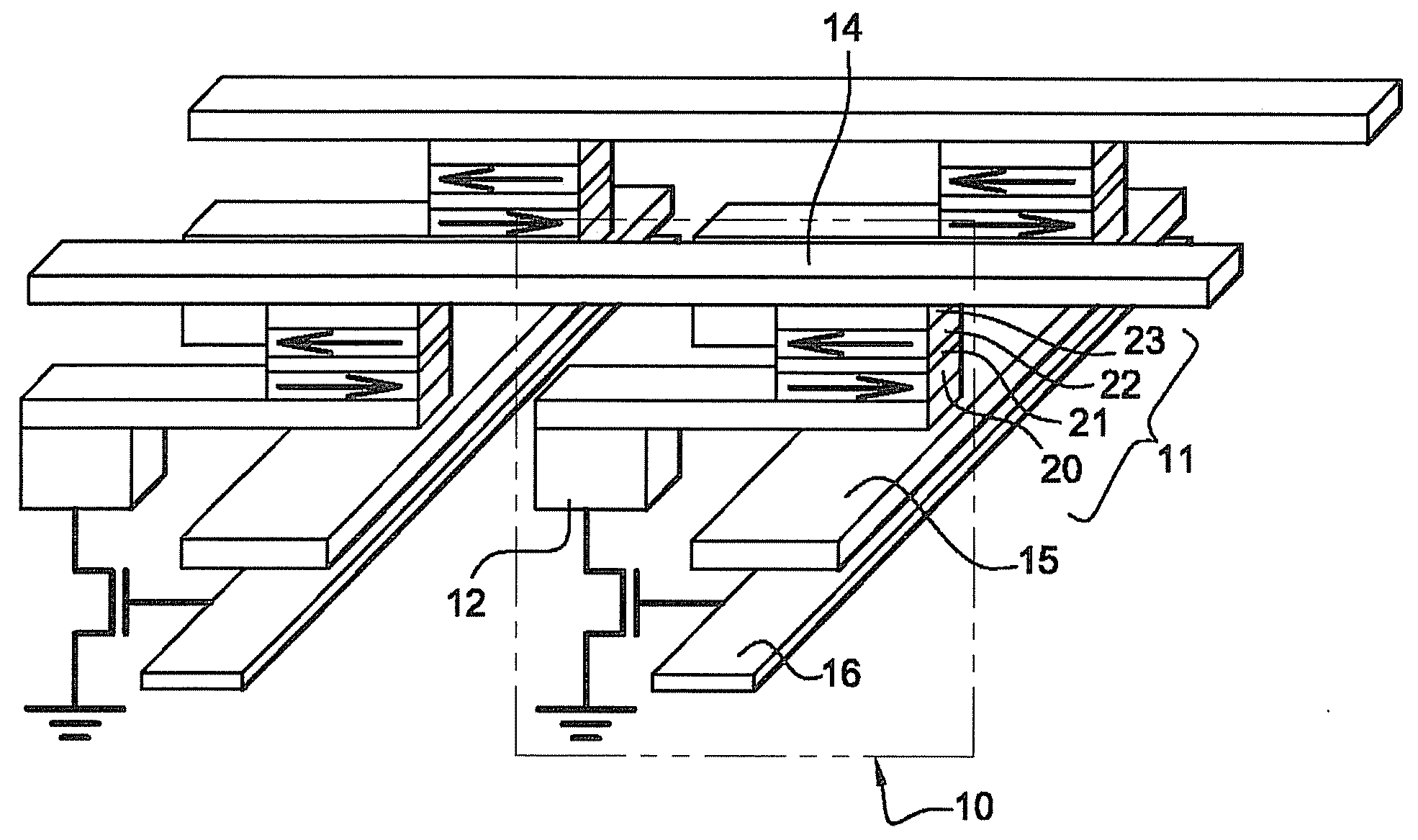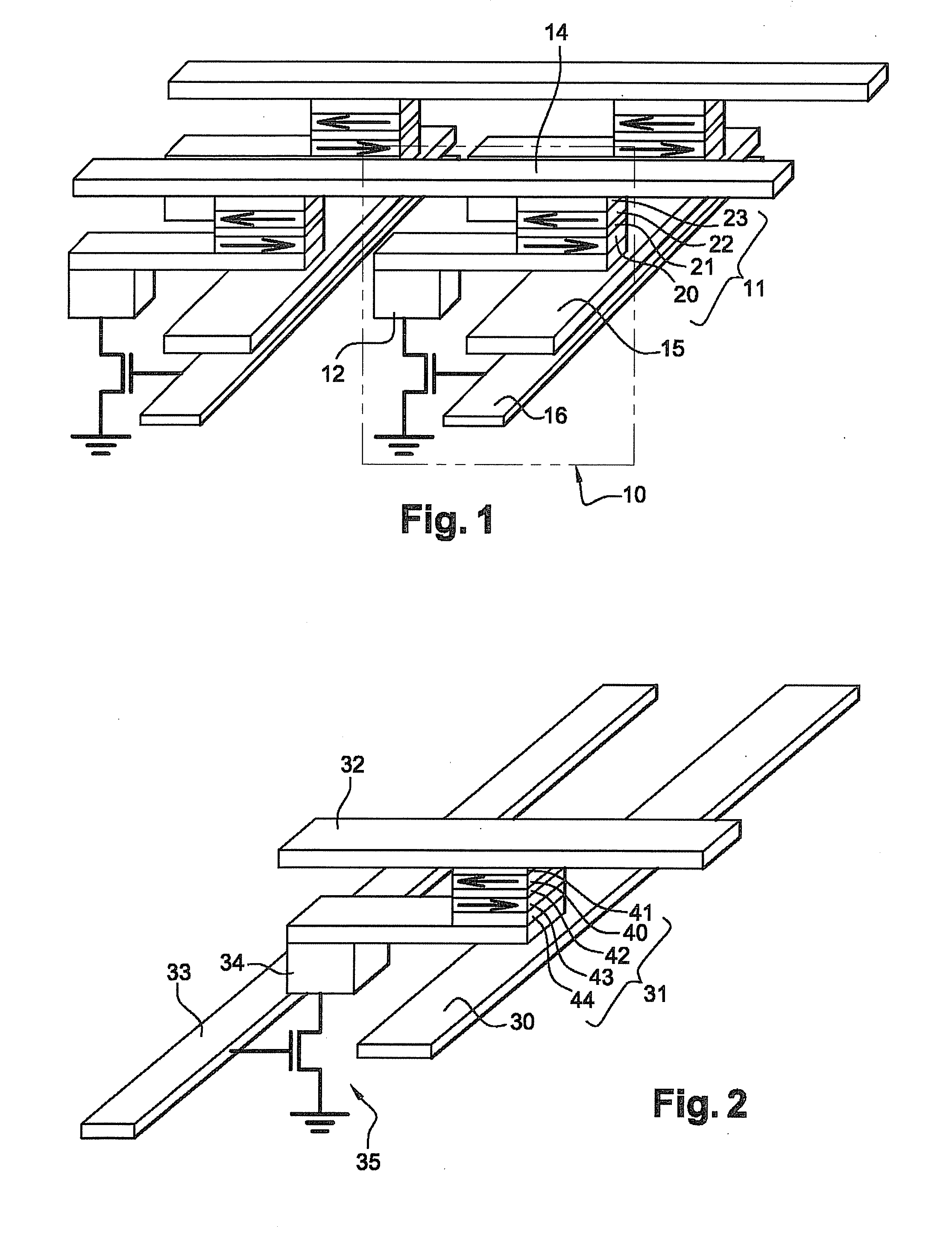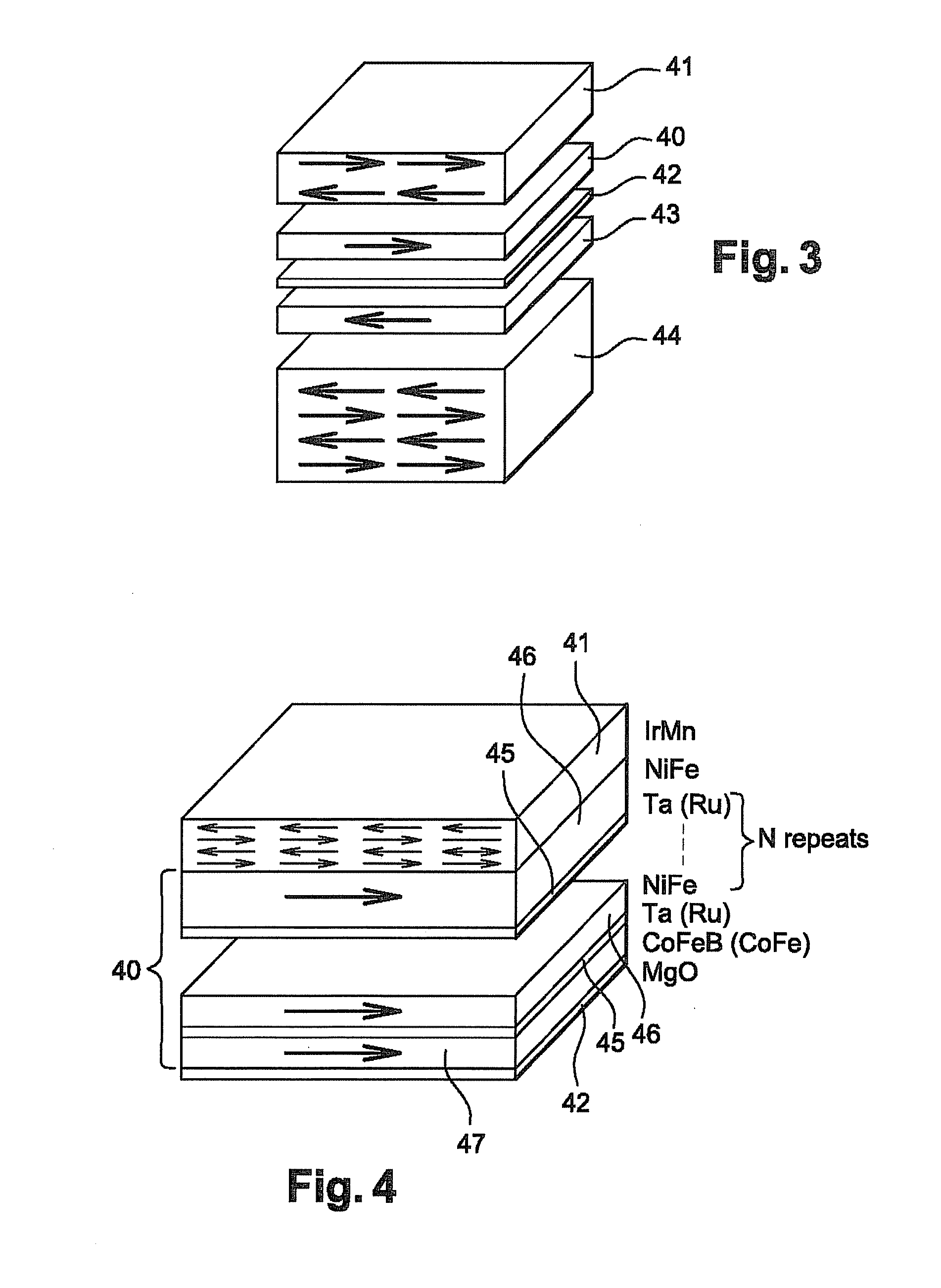Magnetic element with thermally-assisted writing
a technology of magnetic elements and thermally assisted writing, which is applied in the direction of recording/reproducing/erasing methods, instruments, and record information storage, etc., can solve the problems of limited capacity, limited integration, and easy to see the limits of this architecture, and achieve good trapping of the storage layer and high magnetoresistance efficiency
- Summary
- Abstract
- Description
- Claims
- Application Information
AI Technical Summary
Benefits of technology
Problems solved by technology
Method used
Image
Examples
second embodiment
[0107]In the invention, it is also possible to insert heterogeneous metal oxides in the form of thin layers obtained, for example, by oxidising thin layers of a compound such as Al1-xCux, x being within the range 0.1 to 10%. This type of layer was developed for magnetoresistive heads which use confined current paths. Because aluminium's affinity for oxygen is much greater than copper's, after oxidation the layers consist of AlOx layers pierced by copper metallised holes having a relatively well-controlled density and size. The density and the size of these holes are determined by the quantity of copper mixed with the aluminium during the AlCu alloy deposition phase prior to oxidation and by the oxidation conditions (pressure, temperature during oxidation).
[0108]More generally speaking, one can use any form of heterogeneous alloy having the general formula: My(NOx)1-y where M is a transition metal selected from the group comprising nickel, cobalt and iron or a noble metal or an alloy...
first embodiment
[0113]As in the first embodiment, it is also possible to insert several layers (typically as many as 2 or 3) of such heterogeneous alloys in the stack whilst nevertheless maintaining the required thickness in order to preserve good magnetic coherence of the entire storage layer and appropriate exchange field properties. In other words, the various layers which make up the storage layer must be sufficiently magnetically coupled to respond as a single magnetic layer, the coercivity of which is less than the exchange anisotropy field, the latter typically equaling several dozen to several hundred oersteds in normal mode, i.e. other than at the time of a write.
third embodiment
[0114]In the invention, the layer of amorphous or quasi-amorphous material inserted into the storage layer can be obtained by a natural or plasma oxidation stage which takes place during growth of the upper magnetic layer of the tunnel junction. For example, one can deposit, on the MgO tunnel barrier, a first 2 nm thick layer of CoFeB or CoFe with a body-centred cubic crystal lattice (iron concentration in excess of 30% and preferably around 50%). The structure obtained is then exposed to the atmosphere or oxygen so as to naturally oxidise the surface of the CoFeB or CoFe in order to obtain formation of a layer of CoFeBOx or CoFeOx.
[0115]After this operation, the upper layer can be grown using a face-centred cubic type magnetic material such as CoFe having an iron concentration less than 30%, for example, Co90Fex or NiFe.
[0116]This technique for implementing a nanometric oxide layer from the oxidation surface of a previously deposited magnetic layer is identical to that already deve...
PUM
| Property | Measurement | Unit |
|---|---|---|
| thickness | aaaaa | aaaaa |
| thickness | aaaaa | aaaaa |
| magnetic thickness | aaaaa | aaaaa |
Abstract
Description
Claims
Application Information
 Login to View More
Login to View More - R&D
- Intellectual Property
- Life Sciences
- Materials
- Tech Scout
- Unparalleled Data Quality
- Higher Quality Content
- 60% Fewer Hallucinations
Browse by: Latest US Patents, China's latest patents, Technical Efficacy Thesaurus, Application Domain, Technology Topic, Popular Technical Reports.
© 2025 PatSnap. All rights reserved.Legal|Privacy policy|Modern Slavery Act Transparency Statement|Sitemap|About US| Contact US: help@patsnap.com



